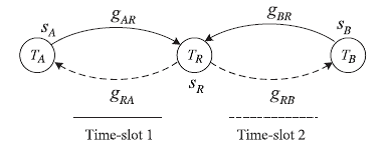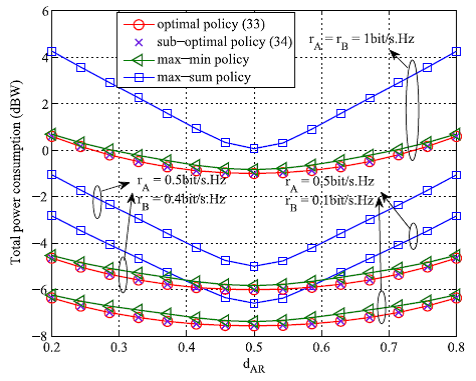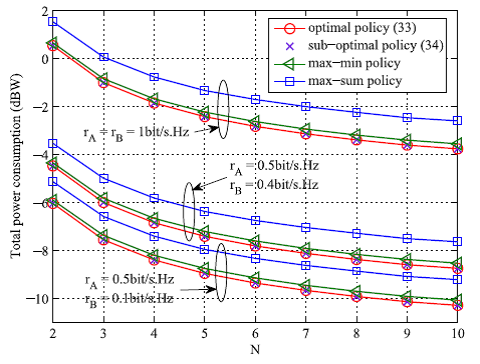EDITORIAL
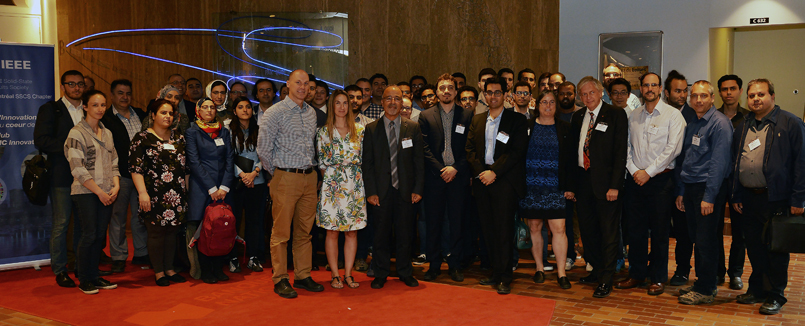
We organized our annual symposium on May 26th. It was with great enthusiasm that we received our guest speakers, including Edith Beigne from CEA-LETI in Grenoble, France, Dennis Sylvester from the University of Michigan in Ann Arbor, U.S.A., both of them being Distingueshed Lecturers of the IEEE Solid-State Circuits Society, as well as our colleague Frédéric Nabki from ÉTS and Member of ReSMiQ, and all forty participants who attended this symposium. Nineteen ReSMiQ students participated in the scientific poster competition and the selection committee was impressed by the high quality of the work presented. Furthermore, three of them received awards for the excellence of their presentations (more details).
 We are also pleased to announce that ReSMiQ has a new member, professor Steve Shih of the Electrical and Computer Engineering Department at Concordia University. He works in the field of microfluidics applied to health and energy, and leads a laboratory dedicated to this domain of research.
We are also pleased to announce that ReSMiQ has a new member, professor Steve Shih of the Electrical and Computer Engineering Department at Concordia University. He works in the field of microfluidics applied to health and energy, and leads a laboratory dedicated to this domain of research.
Finaly, We have also learned FRQNT returned to us the 20% budget cut of last year due to budgetary difficulties. We will receive an amount of $ 540,000 per year for the next four years, an annual increase of $ 108,000.
ReSMiQ is a group of researchers in an interuniversity research center that can count on the support of the Fonds de recherche du Québec – Nature et technologies (FRQNT) and nine (9) Quebec universities involved in microsystems research.
NEWS FROM OUR MEMBERS
Exposure
– Dr. Lakhssassi from Université du Québec en Outaouais offered a keynote speech entitled « Design of Fully automated tool for porting analog and mixed signal circuits within different technology nodes » at the IEEE international conference on WIreless Technologies, embedded and intelligent Systems (WITS 2017) held from April 19 to 20, 2017 in Fez, Morrocco.
More details
Achievement
– Dr. Gosselin from Université Laval received a grant from FRQNT as part of their team research project program for the development of a new wireless optoelectronic interface for brain study.
– Dr. Gosselin from Université Laval is supervising Gabriel Gagnon-Turcotte for a PhD who received the special jury award of the Fellowship for Excellence in Graduate Studies awarded by the Ordre des Ingénieurs du Québec (OIQ). More details
RESMIQ’S ACTIVITIES
ReSMiQ Annual Symposium – Report
Best poster award recipients
First place
Jonathan Bouchard, Université de Sherbrooke
Système de comptage de photons corrélé en temps à faible coût pour la tomographie optique diffuse à mesure dans le domaine temporel
Second place (ex-aequo*)
Rabia Rassil, École de technologie supérieure
Conception d’un émetteur-récepteur d’impulsions à bande ultra large (UWB)
Ali Sarafnia, Université Concordia
Introduction du paramètre de contrôle de la directivité adaptative pour les tableaux de microphones différentiels orientables de premier ordre
* There was no 3rd place awarded.
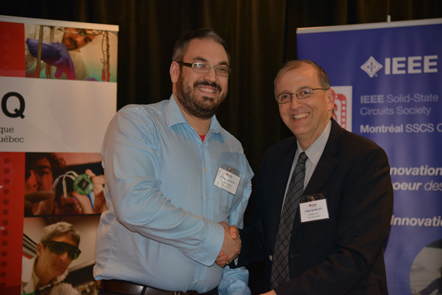
J. Bouchard (U. de Sherbrooke), Y. Savaria (Polytechnique Montréal)
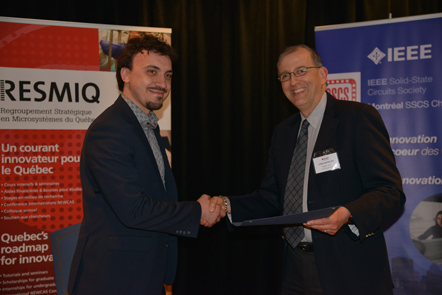
R. Rassil (ÉTS), Y. Savaria (Polytechnique Montréal)
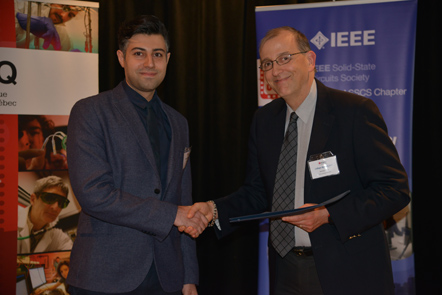
A. Sarafnia (Concordia), Y. Savaria (Polytechnique Montréal)
— UPCOMING —
Scholarships and financial support for graduate students
ReSMiQ Scholarship and supplementary scholarship
APPLICATION DEADLINE: August 15, 2017
More details
Scholarship for post-doctoral fellow
APPLICATION DEADLINE: August 15, 2017
More details
SIGNAL is the main monthly information medium of the Microsystems Strategic Alliance of Québec (ReSMiQ). This newsletter aims to be an active link between the members of ReSMiQ and all individuals who have an interest in research and innovation in microsystems. We commit ourselves to promote in it our members’ research and increase ReSMiQ’s visibility.
ReSMiQ is a group of researchers in an interuniversity research center that can count on the support of the Fonds de recherche du Québec – Nature et technologies (FRQNT) and nine (9) Quebec universities involved in microsystems research.



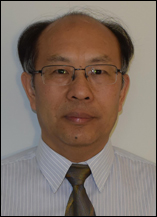 Prof. Wei-Ping Zhu received the Ph.D. degree in Electrical Engineering from Southeast University, Nanjing, China. He is currently Professor and graduate program director in the Department of Electrical and Computer Engineering, Concordia University, Montreal, Canada. He was an Associate Professor in the Department of Information Engineering at Nanjing University of Posts and Telecommunications. Dr. Zhu worked as a System Engineer at Nortel Networks and at SR Telecom Inc. in Ottawa. His research interests include digital signal processing fundamentals, speech and statistical signal processing, and signal processing for wireless communication with a particular focus on MIMO systems and cooperative communication. Dr. Zhu has published more than 250 papers in refereed journals and international conferences. He has served as an Associate Editor of several IEEE Transaction journals and is currently an Associate Editor of the Journal of The Franklin Institute. Dr. Zhu was Secretary and Chair of the Digital Signal Processing Technical Committee of the IEEE CAS Society.
Prof. Wei-Ping Zhu received the Ph.D. degree in Electrical Engineering from Southeast University, Nanjing, China. He is currently Professor and graduate program director in the Department of Electrical and Computer Engineering, Concordia University, Montreal, Canada. He was an Associate Professor in the Department of Information Engineering at Nanjing University of Posts and Telecommunications. Dr. Zhu worked as a System Engineer at Nortel Networks and at SR Telecom Inc. in Ottawa. His research interests include digital signal processing fundamentals, speech and statistical signal processing, and signal processing for wireless communication with a particular focus on MIMO systems and cooperative communication. Dr. Zhu has published more than 250 papers in refereed journals and international conferences. He has served as an Associate Editor of several IEEE Transaction journals and is currently an Associate Editor of the Journal of The Franklin Institute. Dr. Zhu was Secretary and Chair of the Digital Signal Processing Technical Committee of the IEEE CAS Society. 